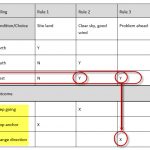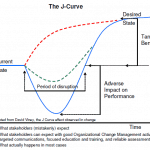Windows 7 versus Windows 8 Keyboard Shortcuts
Windows 7 versus Windows 8 Keyboard Shortcuts
In a previous blog Windows 8 Consumer Preview, I discussed the significant challenge learning curve navigating through Windows 8. One response asked for a table of shortcut keys or mouse movements. Windows 7 provides some very useful keystrokes. Powerful tools for the user and the IT professional.
Microsoft provides a link to Windows 7 keyboard shortcuts that includes subcategories for ease of access, general keyboard, dialog box, windows logo, windows explorer, taskbar, magnifier, remote desktop connection, paint, wordpad, calculator, journal and help shortcuts. Rather than copy all of the tables, I have aggregated many of the keystroke shortcuts that were new (or improved) in Windows 7.
Windows 7 KeyStroke shortcuts
| Win+M | Minimize all open windows |
| Win+D | Show Desktop |
| Win+Up | Maximize |
| Win+Down | Restore / Minimize |
| Win+Left | Snap to left |
| Win+Right | Snap to right |
| Win+Shift+Left | Jump to left monitor |
| Win+Shift+Right | Jump to right monitor |
| Win+Home | Minimize / Restore all other windows |
| Win+Tab | Aero Task Switcher |
| Win+T | Focus the first taskbar entry Press again to cycle through taskbar entries |
| Win+Shift+T | Cycle backwards through taskbar |
| Win+Space | Peek at the desktop (Release space bar to resume) |
| Win+B | System Tray Icons |
| Win+E | Windows Explorer |
| Win+F | Start Windows Search |
| Win+Pause/Break | System properties panel |
| Win+G | Bring gadgets to the top of the Z-order |
| Win+P | External display (Projector) options (mirror, extend desktop, etc) |
| Win+U | Ease of Access Menu |
| Win+X | Mobility center (on mobile devices) |
| Win+# | (# = a number key) Launches instance of the application in the Nth slot on taskbar. |
| Win +/- | (plus or minus key) Magnifier, Zoom in or out. |
| Ctl+Win+F | Search for Computers |
| Shift+ Click Taskbar Icon | Launch new instance |
| Ctl+Shift+Taskbar Icon | Launch new instance in admin mode |
| Ctl+Shift+N | Open Windows Explorer, create new folder |
| Alt+Up | Navigate up 1 folder in Windows Explorer |
| Alt+D | Select Explorer address bar |
| Alt+P | Select Explorer file preview pane |
| Ctl+Esc | Start Menu |
| Ctl+Shift+Esc | Task Manager |
Starting with an Internet search for Windows 8 Keyboard shortcuts yields some useful overviews. Actually, searching for ‘Windows 8 keyboard shortcuts’ provided more than 13 million matches. Yep. Windows 8 reviewers are certainly seeking and sharing navigational tips. Official Microsoft content, not so much. The Windows 7 link provided above appears on page three of my search, and an older Windows XP keyboard shortcut [http://support.microsoft.com/kb/126449] link appears on page six.
The Ultimate List of Keyboard Shortcuts for Windows 8 is truly the most simplified, though comprehensive list I have been able to find. Grabbing the available list, I took the time to compare Windows 7 and Windows 8 key functions, testing them on both platforms. They are in a few cases similar, though the navigation within Windows 8 is so significantly different that many keystroke combinations change entirely. Many with similar functions flip you into the classic Windows view, then launch the comparable application. You need to try them for yourself. Results may vary based upon your Windows 8 location and active application when you attempt them. You at least have a starting point for your quest.
Windows 8 KeyStroke Shortcuts
| Similar Fxn to Win 7 | Key combination | Outcome |
| * | Windows key | Brings up the Metro start screen. You can start typing to search for an app, just like the Win7 start menu. |
| * | Windows key + B | Switch to the (classic) Windows desktop and select the tray notification area. |
| Windows key + C | Brings up the Charms menu, where you can search, share, and change settings. | |
| * | Windows key + D | Brings up the old Windows desktop. |
| * | Windows key + E | Launch Windows Explorer with Computer view displayed. |
| * | Windows key + F | Brings up the Metro File search screen. |
| Windows key + H | Opens the Metro Share panel. | |
| Windows key + I | Opens the Settings panel, where you can change settings for the current app, change volume, wireless networks, shut down, or adjust the brightness. | |
| Windows key + J | Switches focus between snapped Metro applications. | |
| Windows key + K | Opens the Devices panel (for connecting to a projector or some other device) | |
| * | Windows key + L | Lock PC and return to Lock screen. |
| * | Windows key + M | Minimize all Windows on the desktop |
| Windows key + O | Locks device orientation. | |
| * | Windows key + P | Choose between available displays. |
| Windows key + Q | Brings up the Metro App Search screen. | |
| Windows key + R | Switch to the (classic) Windows desktop and display the Run box. | |
| * | Windows key + U | Switch to the (classic) Windows desktop and launch the Ease of Access Center. |
| Windows key + V | Cycles through toasts. | |
| Windows key + W | Brings up the Metro Settings search screen. | |
| Windows key + X | Launch Start Menu. | |
| Windows key + Y | Temporarily peek at the desktop. | |
| Windows key + Z | Opens the App Bar for the current Metro application. | |
| Windows key + Page Up / Down | Moves tiles to the left / right. | |
| * | Windows key + Tab | Opens the Metro application switcher menu, switches between applications. |
| Windows key + , (comma) | Aero Peek at the desktop. | |
| Windows key + . (period) | Snaps the current Metro application to one side of the screen. (Right side) | |
| Windows key + Shift + . (period) | Snaps the current Metro application to the other side of the screen. (Left side) | |
| Windows key + Space | Switch input language and keyboard layout. | |
| Windows key + Shift + V | Cycles through toasts in reverse order. | |
| Windows key + Enter | Launches Narrator | |
| Windows key + Arrow Keys | Switch to the (classic) Windows desktop and enable Aero Snap |
For an overview of Windows 8 navigation check out Kent Walter’s Windows Experience Blog Getting around in Windows 8. As you finish reading Kent’s blog, don’t forget to download the Keyboard shortcut PDF. In my haste specifically to find a straight forward keyboard map, I skipped the reference to his keystroke map within his blog – even though his blog was discovered second in my initial search. Print the PDF on 11×17 paper, then try some of the combinations. Read Kent’s entire Blog. Although rudimentary, he does help to explain new terms and approaches like ‘charms’, the app bar, finding and pinning items. Then take some time to read the 117 comments – they expose you to additional features and challenges associated with Windows 8 navigation. Pointers, redirection, and site references from other explorers are helping with the quest. After more than an hour reading and checking out ideas, progress is possible.
There is a roadmap for this game. You just have to learn the new rules terms.
Enjoy,
Steven Fullmer
Interface Technical Training Staff Instructor
You May Also Like
Keyboard Shortcuts, Shortcuts, Win 7, Win 8, win 8 shortcut download, Windows 7, Windows 8
A Simple Introduction to Cisco CML2
0 3898 0Mark Jacob, Cisco Instructor, presents an introduction to Cisco Modeling Labs 2.0 or CML2.0, an upgrade to Cisco’s VIRL Personal Edition. Mark demonstrates Terminal Emulator access to console, as well as console access from within the CML2.0 product. Hello, I’m Mark Jacob, a Cisco Instructor and Network Instructor at Interface Technical Training. I’ve been using … Continue reading A Simple Introduction to Cisco CML2
Creating Dynamic DNS in Network Environments
0 643 1This content is from our CompTIA Network + Video Certification Training Course. Start training today! In this video, CompTIA Network + instructor Rick Trader teaches how to create Dynamic DNS zones in Network Environments. Video Transcription: Now that we’ve installed DNS, we’ve created our DNS zones, the next step is now, how do we produce those … Continue reading Creating Dynamic DNS in Network Environments
Cable Testers and How to Use them in Network Environments
0 727 1This content is from our CompTIA Network + Video Certification Training Course. Start training today! In this video, CompTIA Network + instructor Rick Trader demonstrates how to use cable testers in network environments. Let’s look at some tools that we can use to test our different cables in our environment. Cable Testers Properly Wired Connectivity … Continue reading Cable Testers and How to Use them in Network Environments





Pingback: Windows 10 – Shortcut Keys
Pingback: How to enable and Use Windows 8 Client Hyper-V | Tech Training Blog
Pingback: Enhancing Windows 8 – Managing Your Navigation | Interface Technical Training
Pingback: How to Use Windows Keyboard Shortcuts | Free Internet Marketing Techniques and Tips with Michael Harrington
Pingback: Windows 8 Consumer Preview | | Interface Technical Training BlogInterface Technical Training Blog